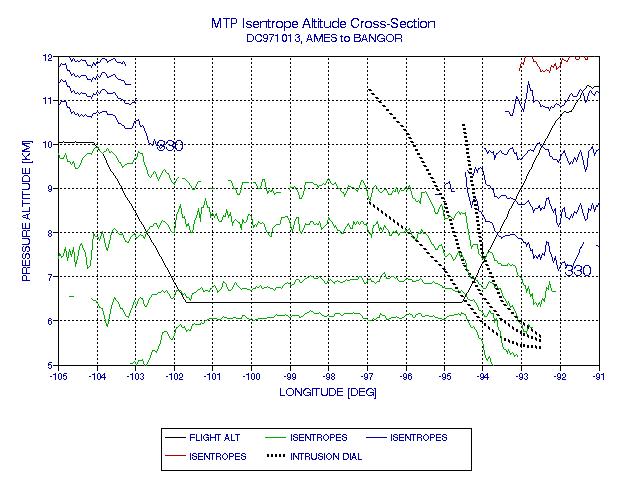
DC971013 INTRUSION ENCOUNTER
2000 March 10
The following figure illustrates MTP's isentrope steep slopes during pasage through a stratospheric intrusion.

Figure 1. IAC during intrusion encounter. Dashed lines are DIAL's stratospheric intrusion location (bottom, mid, top). Isentropes are 5 K apart.
Note that the isentropes within the intrusion slope downward as the flight progresses from left to right. Ther eis approximate agreement of isentrope slope and intrusion slope in the lower half of the intrusion betweeen longitudes -94.7 and -92.8. This implies that this portion of the intrusion moved into place rapidly, before diabatic processes and mixing could occur. This same condition exists for the upper boundary of the intrusion from -93.8 to -92.8 degrees longitude.
Lest the reader disbelieves that the isentropes are sloped in this region, view the next figure, showing a larger span of longitudes.

Figure 2. IAC during intrusion encounter. Dashed lines are DIAL's stratospheric intrusion location (bottom, mid, top). Isentropes are 5 K apart.
This figure has the 330 K isentrope labeled, and note how it slopes
from about 11 km to 7.3 km while flying from a longitude of -105 to -92
degrees. This is evidence for a very contorted isentrope field, and
is consistent with the message of Fig.1.
____________________________________________________________________
This site opened: March 2, 2000. Last Update: March 2, 2000